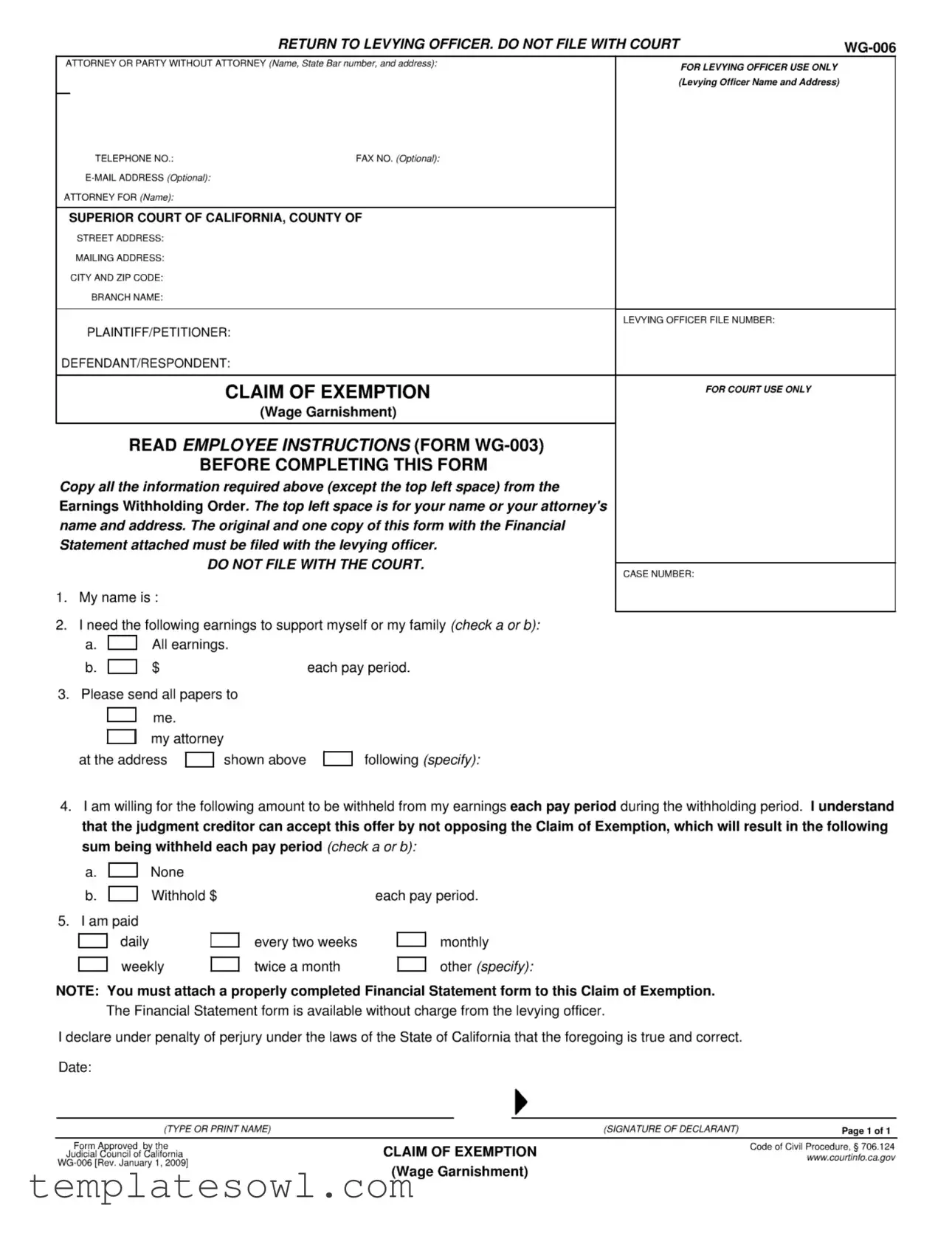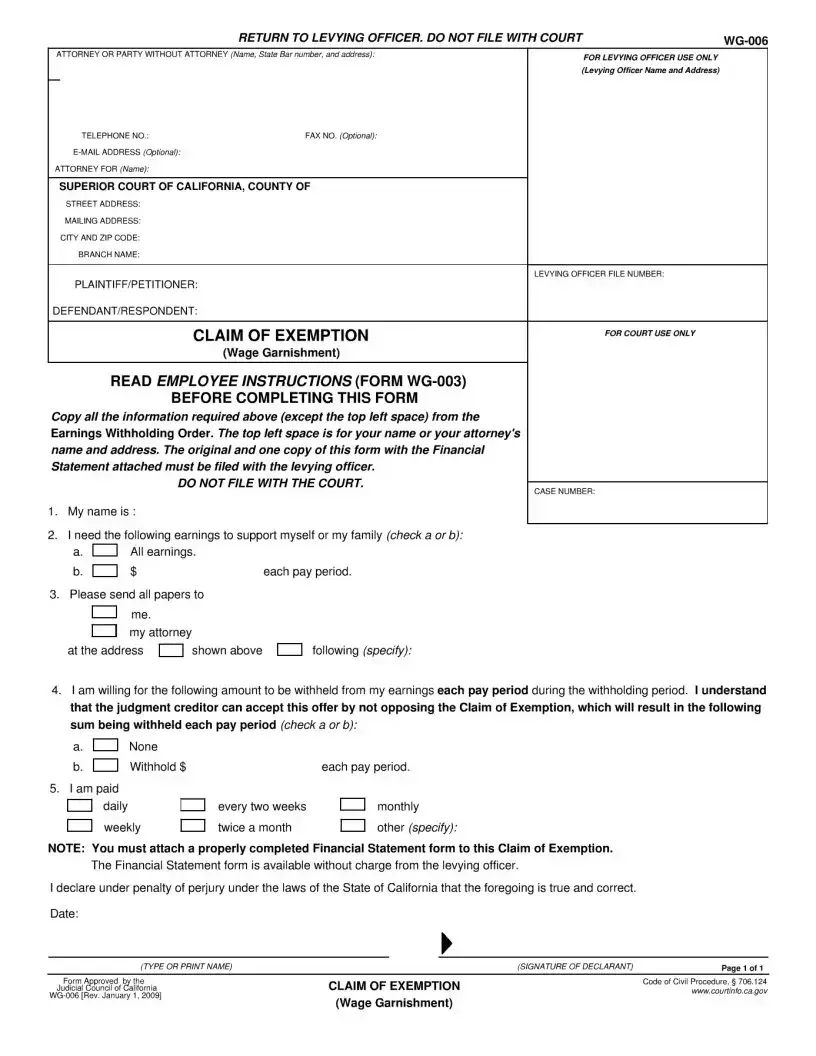What is the Claim of Exemption WG-006 form?
The Claim of Exemption WG-006 form is used in California to request an exemption from wage garnishment. When a creditor seeks to garnish a person's wages, this form allows the individual to assert that their earnings should not be subject to garnishment due to financial hardship or other qualifying reasons.
Who should fill out this form?
This form should be completed by anyone who has received an Earnings Withholding Order and believes that their wages should be exempt from garnishment. If you are struggling to support yourself or your family, or if your earnings fall below certain thresholds, this form provides a way to claim those exemptions.
What information do I need to provide?
You must complete various sections of the form, including your name, your attorney’s name if applicable, and information about your earnings. This includes how often you are paid, the amount you are willing to have withheld, and your financial situation. It is crucial to attach a properly completed Financial Statement form as well.
What does it mean to declare under penalty of perjury?
By signing the form and declaring under penalty of perjury, you affirm that the information you provided is true and correct. This is a serious legal commitment. Providing false information can lead to legal repercussions and may negatively affect your claim for exemption.
What is the process after I submit this form?
Once you have filled out the Claim of Exemption WG-006 form, you must submit the original and one copy to the levying officer, not the court. The levying officer is responsible for reviewing the claim and will inform you of the next steps, which may involve your creditor being given the opportunity to respond to your claim.
What if the creditor opposes my claim?
If the creditor opposes your claim of exemption, a hearing may be scheduled to determine whether your wages should be garnished. It is advisable to gather evidence to support your claim and, if possible, enlist legal assistance to navigate the hearing process effectively.
Is there a fee for filing the Claim of Exemption?
No, there is no fee to file the Claim of Exemption WG-006 form with the levying officer. It’s intended to provide relief to individuals facing financial difficulties, so there should not be an additional burden of filing fees.
How can I contact the levying officer?
You can find the contact information for your specific levying officer in the Earnings Withholding Order you received. This information will typically include a name, phone number, and address where you can send your completed form.
Can I represent myself in this matter?
Yes, you are allowed to represent yourself when filing the Claim of Exemption. However, if you feel uncertain about the process or if your case involves complications, it may be beneficial to seek legal advice to ensure that your rights are fully protected.
What happens if my exemption is granted?
If your claim of exemption is granted, the levying officer will notify the creditor, and they will be required to adjust the garnishment accordingly. This means that either your wages will not be garnished, or only a smaller amount will be withheld each pay period, giving you some financial relief.

